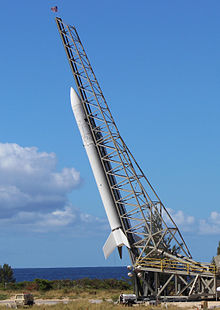
The Centaur is a family of rocket propelled upper stages that has been in use since 1962. It is currently produced by U.S. launch service provider United Launch Alliance, with one main active version and one version under development. The 3.05 m (10.0 ft) diameter Common Centaur/Centaur III flies as the upper stage of the Atlas V launch vehicle, and the 5.4 m (18 ft) diameter Centaur V has been developed as the upper stage of ULA's new Vulcan rocket. Centaur was the first rocket stage to use liquid hydrogen (LH2) and liquid oxygen (LOX) propellants, a high-energy combination that is ideal for upper stages but has significant handling difficulties.

Delta IV was a group of five expendable launch systems in the Delta rocket family. It flew 45 missions from 2002 to 2024. Originally designed by Boeing's Defense, Space and Security division for the Evolved Expendable Launch Vehicle (EELV) program, the Delta IV became a United Launch Alliance (ULA) product in 2006. The Delta IV was primarily a launch vehicle for United States Air Force (USAF) military payloads, but was also used to launch a number of United States government non-military payloads and a single commercial satellite.

Falcon 1 was a small-lift launch vehicle that was operated from 2006 to 2009 by SpaceX, an American aerospace manufacturer. On 28 September 2008, Falcon 1 became the first privately developed fully liquid-fueled launch vehicle to go into orbit around the Earth.

Atlas II was a member of the Atlas family of launch vehicles, which evolved from the successful Atlas missile program of the 1950s. The Atlas II was a direct evolution of the Atlas I, featuring longer first-stage tanks, higher-performing engines, and the option for strap-on solid rocket boosters. It was designed to launch payloads into low Earth orbit, geosynchronous transfer orbit or geosynchronous orbit. Sixty-three launches of the Atlas II, IIA and IIAS models were carried out between 1991 and 2004; all sixty-three launches were successes, making the Atlas II a highly reliable space launch system. The Atlas line was continued by the Atlas III, used between 2000 and 2005, and the Atlas V, which is still in use as of 2024.
Strypi is a two-stage US sounding rocket. Its first stage consists of two Recruit, the second of one Castor. It is 31 inches in diameter, and has a maximum flight height of 124 miles.
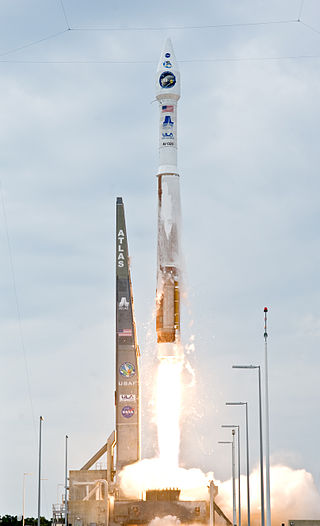
Atlas V is an expendable launch system and the fifth major version in the Atlas launch vehicle family. It was originally designed by Lockheed Martin, now being operated by United Launch Alliance (ULA), a joint venture between Lockheed Martin and Boeing. It is used for DoD, NASA, and Commercial payloads. It is America's longest-serving active rocket. After 87 launches, in August 2021 ULA announced that Atlas V would be retired, and all 29 remaining launches had been sold. As of January 2024, 17 launches remain. Other future ULA launches will use the new Vulcan Centaur rocket.

The NK-33 and NK-43 are rocket engines designed and built in the late 1960s and early 1970s by the Kuznetsov Design Bureau. The NK designation is derived from the initials of chief designer Nikolay Kuznetsov. The NK-33 was among the most powerful LOX/RP-1 rocket engines when it was built, with a high specific impulse and low structural mass. They were intended for the ill-fated Soviet N1F Moon rocket, which was an upgraded version of the N1. The NK-33A rocket engine is now used on the first stage of the Soyuz-2-1v launch vehicle. When the supply of the NK-33 engines are exhausted, Russia will supply the new RD-193 rocket engine. It used to be the first stage engines of the Antares 100 rocket series, although those engines are rebranded the AJ-26 and the newer Antares 200 and Antares 200+ rocket series uses the RD-181 for the first stage engines, which is a modified RD-191, but shares some properties like a single combustion chamber unlike the two combustion chambers used in the RD-180 of the Atlas V and the four combustion chambers used in the RD-170 of the Energia and Zenit rocket families, and the RD-107, RD-108, RD-117, and RD-118 rocket engines used on all of the variants of the Soyuz rocket.

United Launch Alliance, LLC, commonly referred to as ULA, is an American aerospace manufacturer, defense contractor and launch service provider that manufactures and operates rockets that launch spacecraft into Earth orbit and on trajectories to other bodies in the Solar System. ULA also designed and builds the Interim Cryogenic Propulsion Stage for the Space Launch System (SLS).

Antares, known during early development as Taurus II, is an expendable launch system developed by Orbital Sciences Corporation and the Pivdenne Design Bureau to launch the Cygnus spacecraft to the International Space Station as part of NASA's COTS and CRS programs. Able to launch payloads heavier than 8,000 kg (18,000 lb) into low Earth orbit, Antares is the largest rocket operated by Northrop Grumman. Antares launches from the Mid-Atlantic Regional Spaceport and made its inaugural flight on April 21, 2013. Antares 100 was retired in 2014 and series 200 was retired in 2023 due to component unavailability. As of January 2024 Antares 300 is under development.
The Operationally Responsive Space Office is a joint initiative of the United States Department of Defense (DoD). The "stand up" of the office took place 21 May 2007 at Kirtland Air Force Base. The first director of the ORS Office was Col. Kevin McLaughlin, who was also the commander of the Space Development and Test Wing located at Kirtland. The ORS Office focuses on providing quick-response tactical space-based capabilities; utilizing smaller satellites, such as the Tactical Satellite Program and smaller launch vehicles.
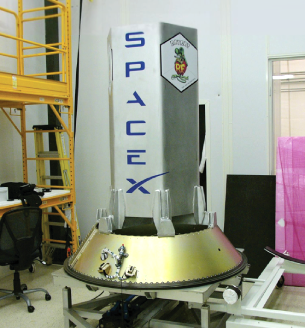
RatSat or DemoSat is an aluminum mass simulator on the fourth flight of the Falcon 1 rocket, launched on 28 September 2008. Ratsat remained bolted to the second stage of the carrier rocket after reaching low Earth orbit. It is an aluminium alloy chamber in hexagonal prism shape with 1.5 m (5 ft) length.
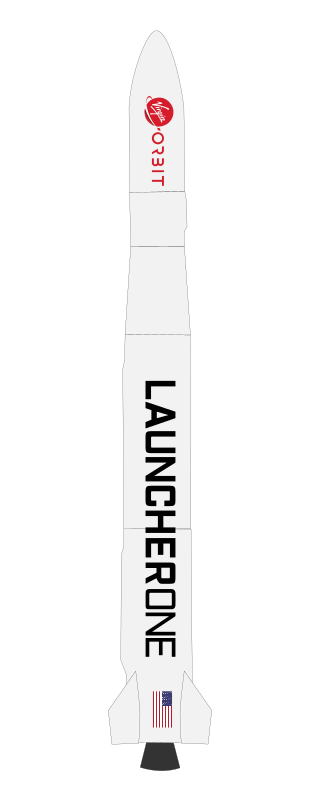
LauncherOne was a two-stage orbital launch vehicle developed and flown by Virgin Orbit that had operational flights from 2021 to 2023, after being in development from 2007 to 2020. It was an air-launched rocket, designed to carry smallsat payloads of up to 300 kg (660 lb) into Sun-synchronous orbit (SSO), following air launch from a carrier aircraft at high altitude. The rocket was carried to the upper atmosphere on a modified Boeing 747-400, named Cosmic Girl, and released over ocean. Initial work on the program was done by Virgin Galactic, another Virgin Group subsidiary, before a separate entity — Virgin Orbit — was formed in 2017 to complete development and operate the launch service provider business separately from the passenger-carrying Virgin Galactic business.

The Epsilon Launch Vehicle, or Epsilon rocket, is a Japanese solid-fuel rocket designed to launch scientific satellites. It is a follow-on project to the larger and more expensive M-V rocket which was retired in 2006. The Japan Aerospace Exploration Agency (JAXA) began developing the Epsilon in 2007. It is capable of placing a 590 kg payload into Sun-synchronous orbit.

Orbital-3, also known as Orb-3, was an attempted flight of Cygnus, an automated cargo spacecraft developed by United States-based company Orbital Sciences, on 28 October 2014. The mission was intended to launch at 22:22:38 UTC that evening. This flight, which would have been its fourth to the International Space Station and the fifth of an Antares launch vehicle, resulted in the Antares rocket exploding seconds after liftoff.

Firefly Aerospace is an American private aerospace firm based in Cedar Park, Texas, that develops launch vehicles for commercial launches to orbit. The company completed its $75 million Series A investment round in May 2021, which was led by DADA Holdings. The current company was formed when the assets of the former company Firefly Space Systems were acquired by EOS Launcher in March 2017, which was then renamed Firefly Aerospace. Firefly's stated purpose is to increase access to space, similar to other private spaceflight companies.
3D printing began to be used in production versions of spaceflight hardware in early 2014, when SpaceX first flew a flight-critical propulsion system assembly on an operational Falcon 9 flight. A number of other 3D-printed spacecraft assemblies have been ground-tested, including high-temperature, high-pressure rocket engine combustion chambers and the entire mechanical spaceframe and integral propellant tanks for a small satellite.

Vulcan Centaur is a two-stage-to-orbit, expendable, heavy-lift launch vehicle created and operated by United Launch Alliance (ULA). It is principally designed for the United States Space Force's National Security Space Launch (NSSL) program, which launches satellites for the Defense Department and U.S. intelligence agencies. It will replace ULA's existing heavy-lift Atlas V and Delta IV Heavy rockets. Vulcan Centaur will also be used for commercial launches, including an order for 38 launches from Kuiper Systems.
LandSpace Technology Corporation is a Chinese commercial space launch provider based in Beijing. It was founded in 2015 by Zhang Changwu.
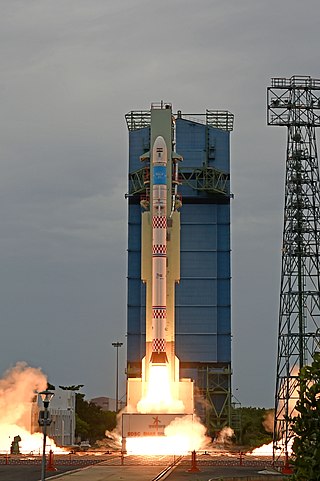
The Small Satellite Launch Vehicle (SSLV) is a small-lift launch vehicle developed by ISRO with payload capacity to deliver 500 kg (1,100 lb) to low Earth orbit or 300 kg (660 lb) to Sun-synchronous orbit for launching small satellites, with the capability to support multiple orbital drop-offs. SSLV is made keeping low cost, low turnaround time in mind with launch-on-demand flexibility under minimal infrastructure requirements.
Terran 1 was an expendable two-stage small-lift launch vehicle developed by Relativity Space. Development began in 2017 and the rocket was retired in 2023. Most structures and components of the vehicle are manufactured with 3D printing processes.
